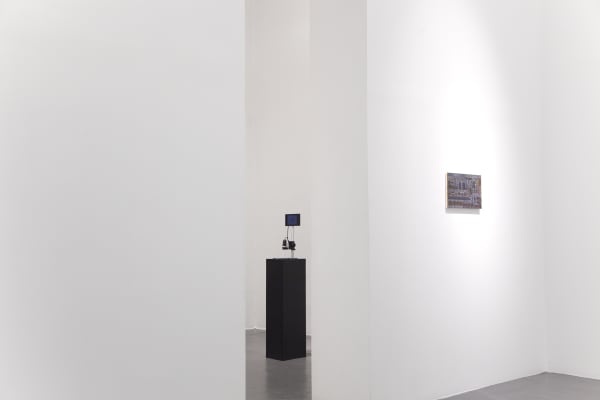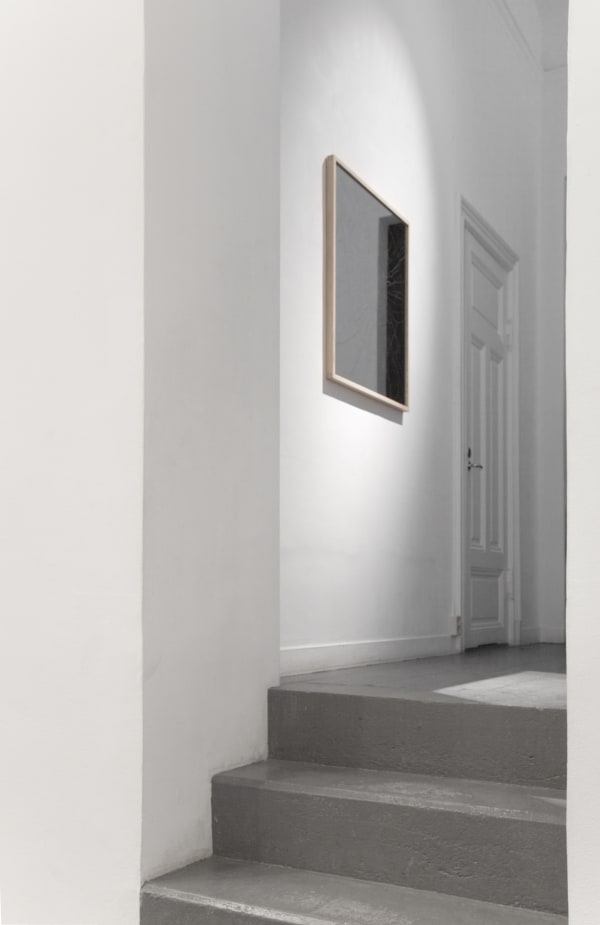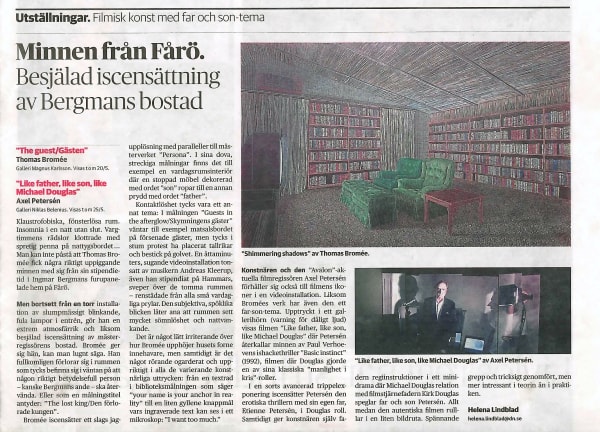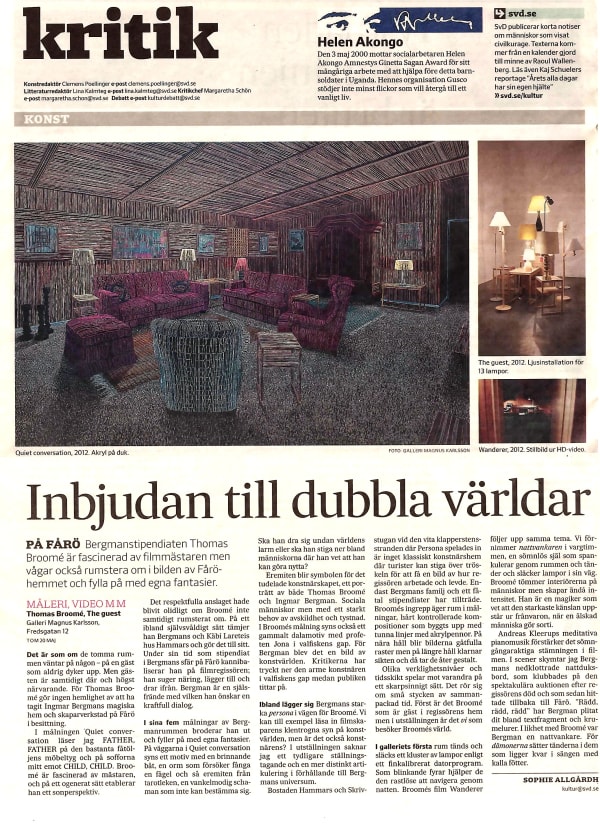Thomas Broomé | The Guest
Galleri Magnus Karlsson is pleased to present Thomas Broomé’s third solo exhibition in the gallery. The exhibition The Guest displays new paintings, sculptures and a light installation. It is also the premiere screening of Broomé's video Wanderer. This work was specifically conceived for, and shot at, Ingmar Bergman’s estate Hammars on the island of Fårö, Sweden.
Thomas Broomé was the first contemporary artist to receive The Bergman Estate Foundation Art Grant in the summer of 2011. The grant allowed him to spend three months at the Bergman estate, and it is from this stay that this exhibition has its starting point. Broomé previously made a painting of Ingmar Bergman’s study, with inspiration from the Bergman film Faithless (original title: Trolösa) and photographs from the Ingmar Bergman estate auction. The grant made it possible for him to walk in Bergman’s footsteps and dig deeper into the subject, resulting in The Guest. Besides being inspired by Bergman’s persona, Broomé was influenced by the 56 meter long building by the sea, it’s history and the mythical tension of the building. Broomé's visit and his personal experience with The Hour of the Wolf in the Bergman house has influenced him to create a unique exhibition, which take us to, and beyond, the rooms at Hammars and a world of mystery writing and light installations.
”The house is built with a clear distinction between its work and private spheres. You wander through something beautiful, yet instrumental: everything has its time and place. The house has a tangible presence, which is difficult to ignore, it is distantly cool, at the same time warm and welcoming. It was quite an peculiar, but wonderful, experience and the work that I did there works as maps in order to be able to find my way back there.”
The video Wanderer brings us on an atmospheric journey through the building, where lights keep turning on and off in an echo of insomniac wanderings in the night. Musician Andreas Kleerup’s original score add another mood and escorts the viewer through rooms where the demons (which Bergman called dämonerna) await. Thomas Broomé’s film creates a layer of time where fleeting memories arise and then flicker away when coming too close.
Thomas Broomé’s work comprises a constant investigation of new ways to visualize our time, and all of its peculiarities. The motifs origin from several of the rooms in Hammars, but are made with Broomé’s unique technique using thin multi-coloured lines toward a dark background. The time consuming process and meticulous formation adds content that narrates the creation of the world rather than the motif itself. Thomas speaks about in-betweens when describing his work: ”Each painting consists of more in-betweens than added colour. These gaps act like building-blocks of which we all consist. The blocks collaborate, but with great distances in between them.”
In the Video room an island of isolation has been created between the viewer and the media. It is intensified by the fact that the television’s flicker is the single light source in the room. The blueish light brings forth the armchairs and Bergman’s VHS-collection of more than 700 movies. Their titles, all written on the canvas side-by-side, create a kind of auto-poetry. Bergman’s library (which holds his book collection of Strindberg, art, psychology and Bergmaniana) transforms through Broomé’s analysis to a room filled with small bits of information, which hide behind a great mass of repetition. A suggestive lit space that calls for the eyes to wander and new meanings to be born. The living room with its furniture drawn with repetitive words is given new meaning. The room’s four lights brighten the rest of the interior of the room and a quiet drama unfolds. The table has been set under the table (!) in the kitchen. The candles are lit and guests are invited. A lonely light struggles in the blue twilight with anxious trees outside the window. A veil conceals the meditation room and everything is loosely woven together: the trees on the waterfront, the pine panelling, the blanket and the candles. But the memory of Love is strong and pictures of a loved one are forever opaque, vivid and vibrant.
The exhibition also includes two sculptures (previously shown at the Armory Show), in which Broomé has experimented with the pressure of 15 tons and a hand-engraved text on a pinhead, which can only be read through a microscope.
See video interview with Thomas Broomé (Swedish):
http://www.gallerimagnuskarlsson.com/news/video-interview-thomas-broomé-about-guest
Parts of this exhibition will be exhibited on Fårö during the Bergman week June 25–July 1.
www.bergmancenter.se
With thanks to:
The Bergman Estate Foundation, Fårö
Malmstenbutiken, Stockholm
















